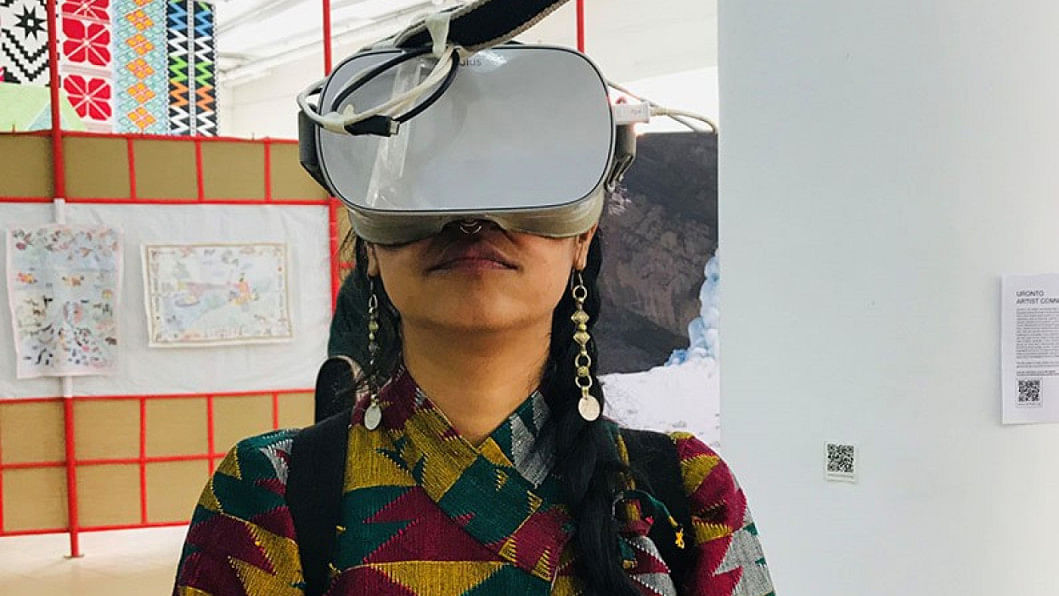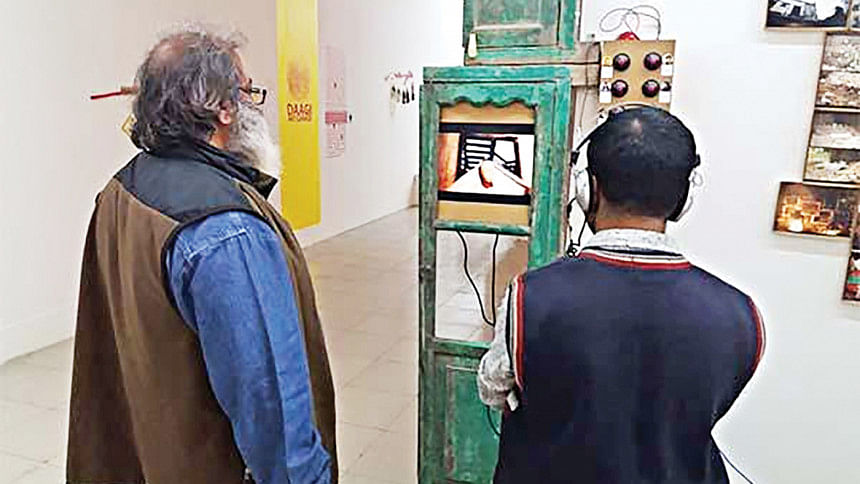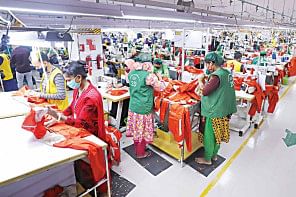Tech and art reconnects lost memories of forgotten places: The tale of Uronto Artist Community

Uronto Artist Community was formed at a time when contemporary art was gradually losing connection with the masses in the country. Artists from different backgrounds were not collaborating, and many of their works were being colonised by the western ways, missing the social realities of our country.
The community's journey started with its first residential exchange programme in 2012, piloted in Kushtia. While visiting her hometown in Kushtia, Sadya Mizan, the founder of the community realised that there were many residential homes that were losing their visuals. "There were many zamindar palaces, rich in cultural history, local music and theatre practices whose narratives were being abandoned with time. And who could be better than artists to recreate those narratives?", said Sadya Mizan. "That's how the name "Uronto" (flying) came to be because we realised that the narratives were flying in such places, and we wanted to travel from one place to another to rediscover them", she added.
The idea was to create a platform for story-telling through interdisciplinary artistic interventions and reconnect with lost memories of forgotten places. The community creates opportunities to connect cultural histories through coexisting and co-creating through collaboration between artists from diverse backgrounds, gaining access to memories that inspire creative workers and empower current generations with knowledge.

In 2013, the residential exchange programme had an open and international call. "This was never meant to be a commercial project, as we feared that it would hamper the organic character of the programme. We mainly focused on the rural areas, as no one usually went there to exchange artistic interests with the locals. We usually set up open studios in the venue. We want the projects to be sight responsive so that they can respond to the stories better. Hence we use local materials to develop the projects. We leave the installation arts to the locals and bring few reference elements to display", said Sadya.
Incorporating technology into this form came out of the need to connect to the masses while conveying a particular message and story through art. Some of the most significant works from the community came out of the collaboration between engineers and artists alike. "We wanted to break the boundaries between technicalities and visuals. Art shouldn't be limited to a flat canvas only, rather it should be a collaborative act, where people from diverse backgrounds can come and work together, and respect each other's creativity", said Sadya.
The community had its first-ever Exhibition in 2018 at the Dhaka Art Summit under the Artist Led Initiative Forum. In the Exhibition, the strategy was to allow different experience through artworks and ensure a strong connection with the audience. In total, the works of 25 artists were displayed along with the documentation of the works. An architectural model of one the venues of the projects was a central display, which was a collaboration between the community, Premier University and Studio 25.
The interesting tech bits about the installation were designed in collaboration with an engineering student, Mehedi Hasan Rupok from Shahjalal University of Science and Technology (SUST). Rupok has a passion for robotics, and from his expertise and interests, he set up an invisible monitor with a special goggle for the spectators to see the display and the documentary that was being shown on the monitor. To add another bit of a tech twist, Rupok also set up a switchboard inspired from old calling bell from the old buildings and coded them in a way where the switches were functioned to display the artists' works in a small monitor peeking out of an old wooden door after being pressed.

The most significant tech-based project by the group was a VR project that took the spectators back to a forgotten place to reconnect to its lost narratives. This project was displayed at the Dhaka Art Summit 2020. The latest residency editions took place at Dubolhati Palace, a crumbling Zamindari (feudal landlord) palace over two hundred years old in the Naogaon District of Rajshahi in Northwest Bangladeshi. This VR project invites visitors into the space that inspired almost thirty participants from ten countries to keep the stories of this area and era alive.
In the 10 minutes of VR tour, the audience could experience 15 artworks but a small zine was distributed during the show for the audience to read and know more about all the works done in the 8th and 9th episode at Dubolhati by scanning QR code. The VR experience enabled the audience to understand the unconventional venues that Uronto work with, and showed how contemporary forms of multiverse artistic expressions merged into the structure. The VR work was complemented with a graphical representation by Sadya Mizan, of a scroll painting (in Bengali and English), which was originally done by a participating artist- Fouzia Mahin, during the recent residency which contains the mythical narratives in the surrounding community at Dubolhati about the Dubolhati Palace.
When asked about the community's future plans regarding these projects, Sadya said, "We want to create a Dhaka-based platform for collaboration between art enthusiasts from different disciplines. Finance is always an issue when it comes to implementing such projects. We also aim to properly archive our VR projects and start a publication."





Comments